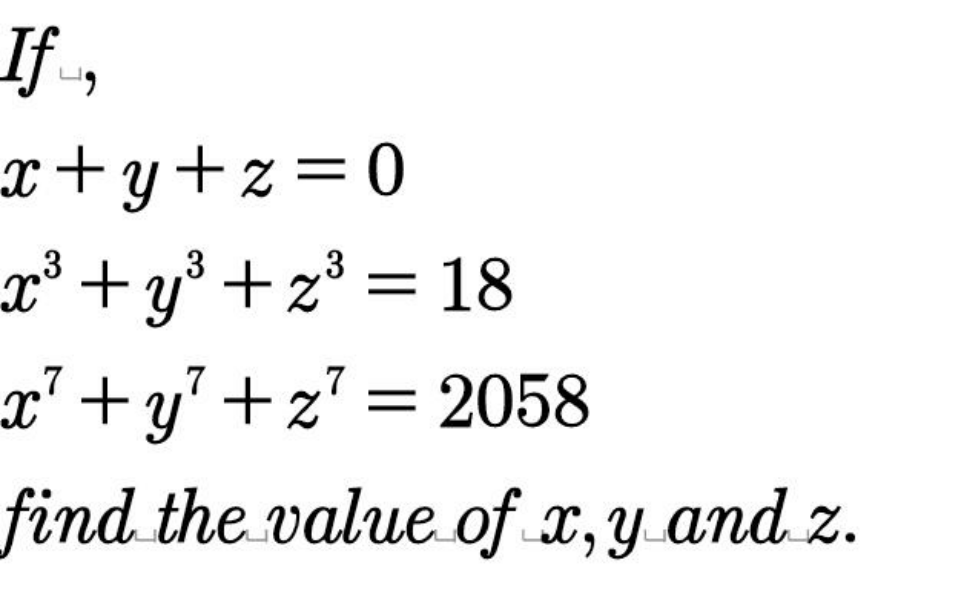
AlgebraQuestion and Answers: Page 263
Question Number 98750 Answers: 0 Comments: 0

Question Number 98796 Answers: 2 Comments: 0

Question Number 98570 Answers: 1 Comments: 1
Question Number 98521 Answers: 1 Comments: 0

Question Number 98613 Answers: 0 Comments: 0

Question Number 98448 Answers: 1 Comments: 5
Question Number 98416 Answers: 3 Comments: 0

Question Number 98280 Answers: 1 Comments: 0
Question Number 98268 Answers: 0 Comments: 7
Question Number 98267 Answers: 2 Comments: 0
Question Number 98215 Answers: 3 Comments: 2
Question Number 98205 Answers: 1 Comments: 0
Question Number 98192 Answers: 2 Comments: 1

Question Number 98293 Answers: 2 Comments: 0

Question Number 98130 Answers: 0 Comments: 0

Question Number 98077 Answers: 0 Comments: 4

Question Number 98073 Answers: 1 Comments: 2
$$\mathrm{solve}\:\sqrt{\mathrm{6}−\mathrm{x}}\:=\:\mathrm{6}−\mathrm{x}^{\mathrm{2}} \\ $$
Question Number 98067 Answers: 2 Comments: 0

Question Number 97968 Answers: 1 Comments: 1
Question Number 99300 Answers: 1 Comments: 0
Question Number 97936 Answers: 1 Comments: 1
Question Number 97920 Answers: 0 Comments: 4

Question Number 97919 Answers: 1 Comments: 2

Question Number 97818 Answers: 1 Comments: 0
Question Number 97808 Answers: 0 Comments: 1

Question Number 97694 Answers: 1 Comments: 7

Pg 258 Pg 259 Pg 260 Pg 261 Pg 262 Pg 263 Pg 264 Pg 265 Pg 266 Pg 267
